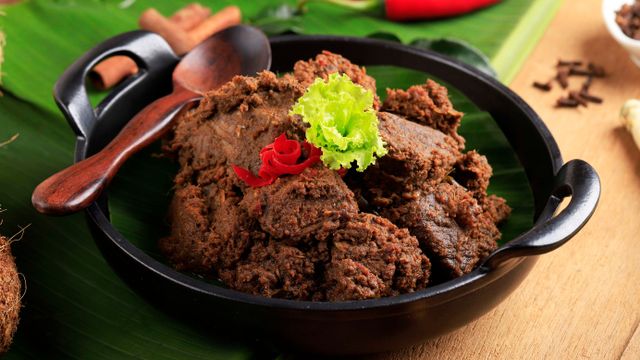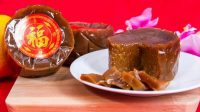ENGLISH KUPASONLINE.COM–Rendang is a food that is quite popular in Indonesia, even in the world. Rendang as the number one most delicious food in the world. But unfortunately, the cultural similarities often make rendang also often recognized as a special food from a neighboring country, Malaysia. But, has rendang been registered and recognized by UNESCO as a special Indonesian food?
Unfortunately, until now, rendang has not been registered as authentic Indonesian food because it is related to documents and requirements. It is not an easy matter to note Cultural Heritage with UNESCO.
Only one Intangible Cultural Heritage (WBTB) can be registered every two years. As reported by the UNESCO.org website, until now there are only 9 (WBTB) Indonesia that are recognized by UNESCO as world heritage, namely Keris (2008), Wayang (2008), Batik (2009), Education and Training Program on Batik (2009), Angklung ( 2010), Saman Dance (2011), Noken Papua (2012) and Three Genres of Traditional Balinese Dance (2015), Pinisi (2017). UNESCO does not arbitrarily determine Cultural Heritage.
Only those who have historical documents, academic studies, complete photographs, and videos regarding their origin will be accepted. Not only that but cultural heritage submitted to UNESCO must also be supported by the regional government of origin, along with the traditional community. However, quoted from a press release from the Ministry of Education and Culture (Kemdikbud), has recognized rendang as Indonesia’s National Intangible Cultural Heritage. This culinary was officially recognized by the Ministry of Education and Culture in 2014.
In the Minangkabau language, rendang is called ‘rendang’ which is a traditional food in Minangkabau. The cage has several colors, namely brownish red, brown, to blackish brown. The definition of rendang is taken from the word marandang, which is a process of processing side dishes made from coconut milk cooked until the water content is reduced, even until they are dry so when called rendang it means processed food that is dry without containing water.
How to Make Rendang
Below is how to make rendang typical of West Sumatra which is delicious and savory.
Ingredients
1 kilogram of the beef thigh, cut into 3 x 4 cm
1 galangal thumb, crushed
1 stalk of lemongrass, crushed
2 pieces of turmeric leaves
5 kaffir lime leaves
3 bay leaves
1/2 teaspoon of ground nutmeg
1 kandis tamarind
2 liters of coconut milk from 3 coconuts
Spice:
100 grams of red chili
13 grains of red onion
3 cloves of garlic
2 cm ginger
1 teaspoon pepper
5 grains of hazelnut
1 teaspoon coriander
Salt to taste
steps
Prepare all the ingredients to make rendang. Then, prepare the ground spices first. Prepare a blender or pestle. Add the red chilies, shallots, garlic, ginger, pepper, candlenuts, coriander, and salt. Process until completely smooth.
If so, prepare a large pan. Saute ground spices and pour coconut milk into it. Stir the coconut milk with the spices that have been mashed until well blended.
After that, add galangal, lemongrass, turmeric leaves, lime leaves, bay leaves, ground nutmeg, and Kandis acid. Stir until well mixed. Heat or cook coconut milk over low heat, stirring occasionally. Cook until the coconut milk is oily.
Next, put the pieces of meat in it. Stir and let the meat cook slowly. Cook over low heat so that the meat and coconut milk can cook slowly and the rendang will blacken by itself.
When the gravy thickens, stir and turn the meat over. When the gravy starts to run dry, stir it by quickly turning the meat all the way to the bottom of the pan. Continue to cook until the coconut milk is oily and the rendang turns black.
A tip in cooking rendang. When the meat is tender, while the coconut milk has not dried up, remove the meat immediately. Then, continue to cook the coconut milk until it starts to get oily, then return the meat to it while stirring.
How about making rendang above? More and more tempted to serve rendang at home? (*)







